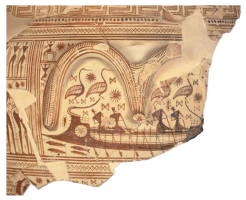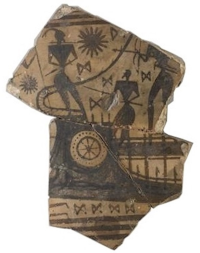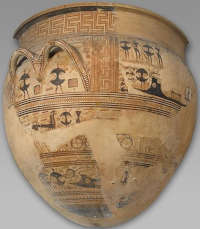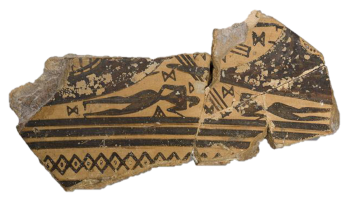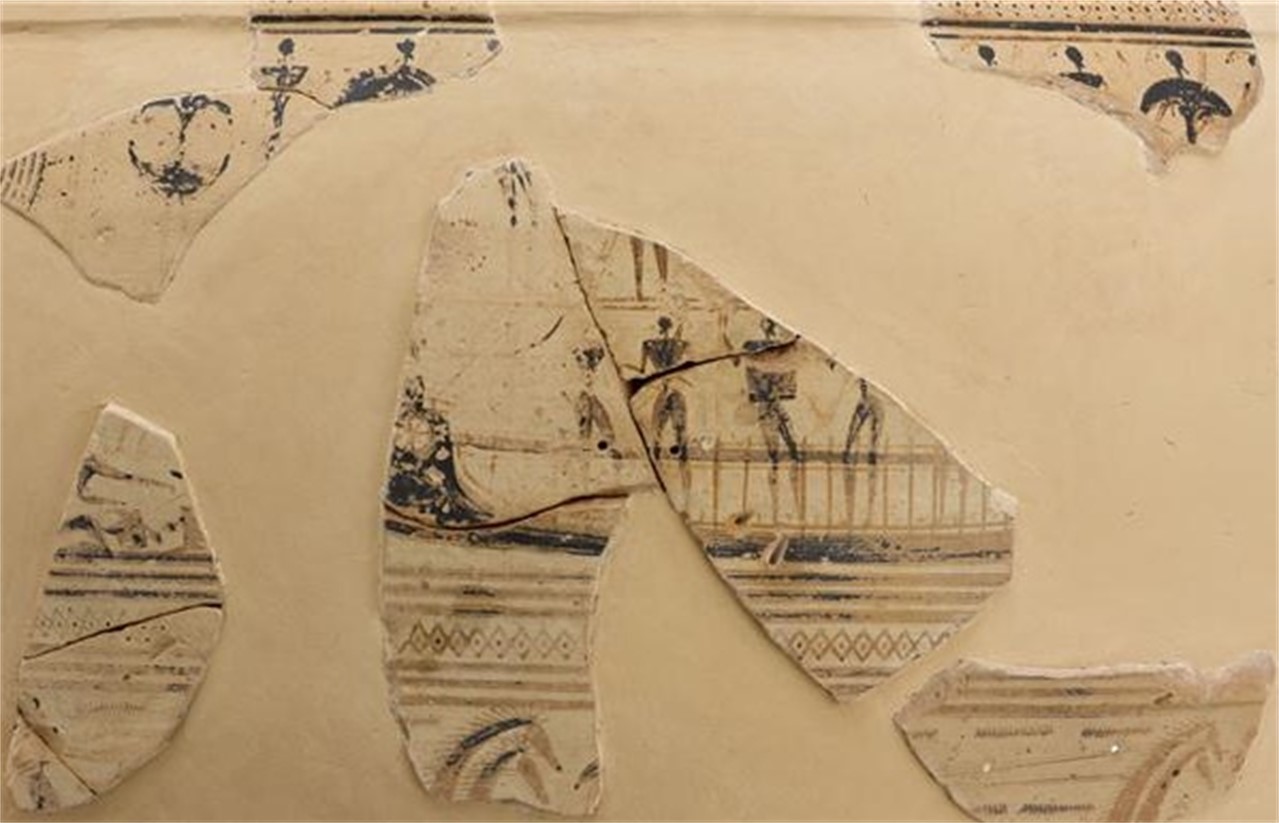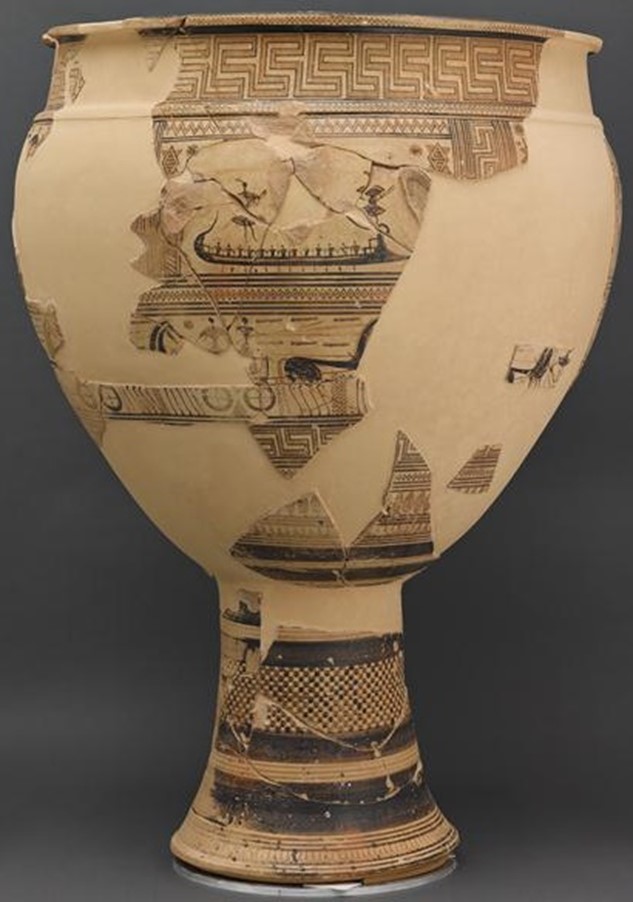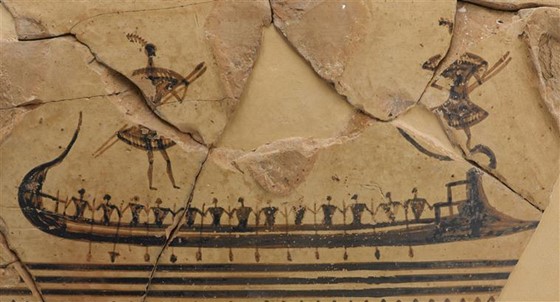A132a: A fragmentary ship to the left, in the conventional Dipylon style, with all the verticals and horizontal present, including tholepins. The stern and part of the bow are missing, including the bow projection and S-shaped part of the horn. The eye has an eight-spoked star is still visible, as well as nineteen rower's rooms. There are five warriors whose feet are on the same level as the tholepins, which indicates that the longitudinal deck did not extend from gunwale to gunwale. Their feet are in this case standing on the rowers' benches. The first four warriors are arranged in pair facing each other. From left to right, the second figure is equipped with a bow, while the third holds two spears upright. The last two figures have only their legs preserved.
A132b: Complete ship to the right. Low flat hull with a reserved line running along its length from the after- to the forecastle. Massive square bow with a concave post integrating the bow projection, with an incurving, very pronounced S-shaped horn that inclines sharply forward, then sharply backwards parallel to the hull. The forecastle is an open balustrade with two horizontal rails at different levels. The incurving sternpost is unusually thick and ends in the typical horn. The aftercastle is an open balustrade with conventional lattice railing. There are thirteen rowers and twelve oars. The attitude of the oarsmen is unique. These sit with their heads facing the stern, chests facing forward, grasping an oar held vertically with their right hand. The first and last rower at the bow and stern hold onto the railing with their free hand. The rest appear like there are holding hands, jointly grasping an oar on each side.


